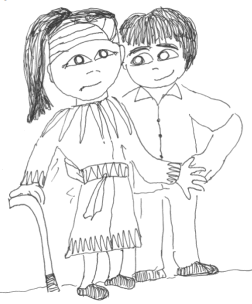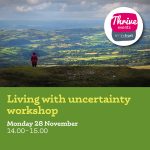Shelley, a member of the brainstrust community, has drawn on her own experience of being diagnosed with a meningioma, as well as her professional experience in education, to create a resource designed for parents who need to explain their brain tumour surgery to their children. Shelley has spoken to us about why she created this resource and how she hopes it will help families. You can download the resource.
My background
I work in education helping teachers, youth workers and educators bring the best of themselves to the children and young people they serve. I love what I do as I get to spend time with children and young people as well as creating educational resources.
Why I created the resource
I was diagnosed with a non-cancerous brain tumour (a meningioma) and then I had to have it surgically removed, a procedure known as a craniotomy. At the time of my surgery, I shared a ward with a young woman who had also had her brain tumour removed, she had decided it was too complicated to tell her son, because she didn’t have the right words to explain it to him and just didn’t know where to begin. During our recoveries (if we were both awake at the same time!) we chatted through how she might explain her recovery to her child and the challenges of returning home post-surgery, feeling exhausted and needing time to recover.
Once I was home, and feeling much recovered, those conversations stayed in my mind. I wrote a short story and sent it to the wonderful staff at brainstrust, to see if the story might be helpful for families. (I also wanted to check that my experiences of craniotomy recovery resonated accurately with others.)
Using the resource
Using a story as a springboard for a discussion with children is what many people do quite naturally. When children listen to an adult reading a story, whether it be a fairy story or a factual narrative, children will often ask questions because the process of storytelling opens up spaces for conversations. When children have information, that can help alleviate fears and worries. I have illustrated the story with simple line drawings, and would suggest printing off the story for each child in the family. Children might choose to colour in the pictures, making the story book their own and maybe writing or drawing their own feelings or thoughts on their own book. Once the pages are completed, you might decide to staple the pages together to create the book.
A huge thanks to staff at brainstrust for their guidance and support. The story is provided completely free of charge but if you would like to make a donation to brainstrust, I’d love that!
Shelley.
You can download Shelley’s resource by clicking here. It is also available on our downloads and resources page, which you can visit by clicking here.
If you or someone you love has a brain tumour diagnosis and you would like support around having difficult conversations, coaching with a brainstrust support specialist can help. Get started today by calling 01983 292 405 or emailing hello@brainstrust.org.uk
By signing up to our mailing list, you will receive all the latest news, events and resources straight to your inbox – helping make sure you are as well resourced and as informed as possible.












